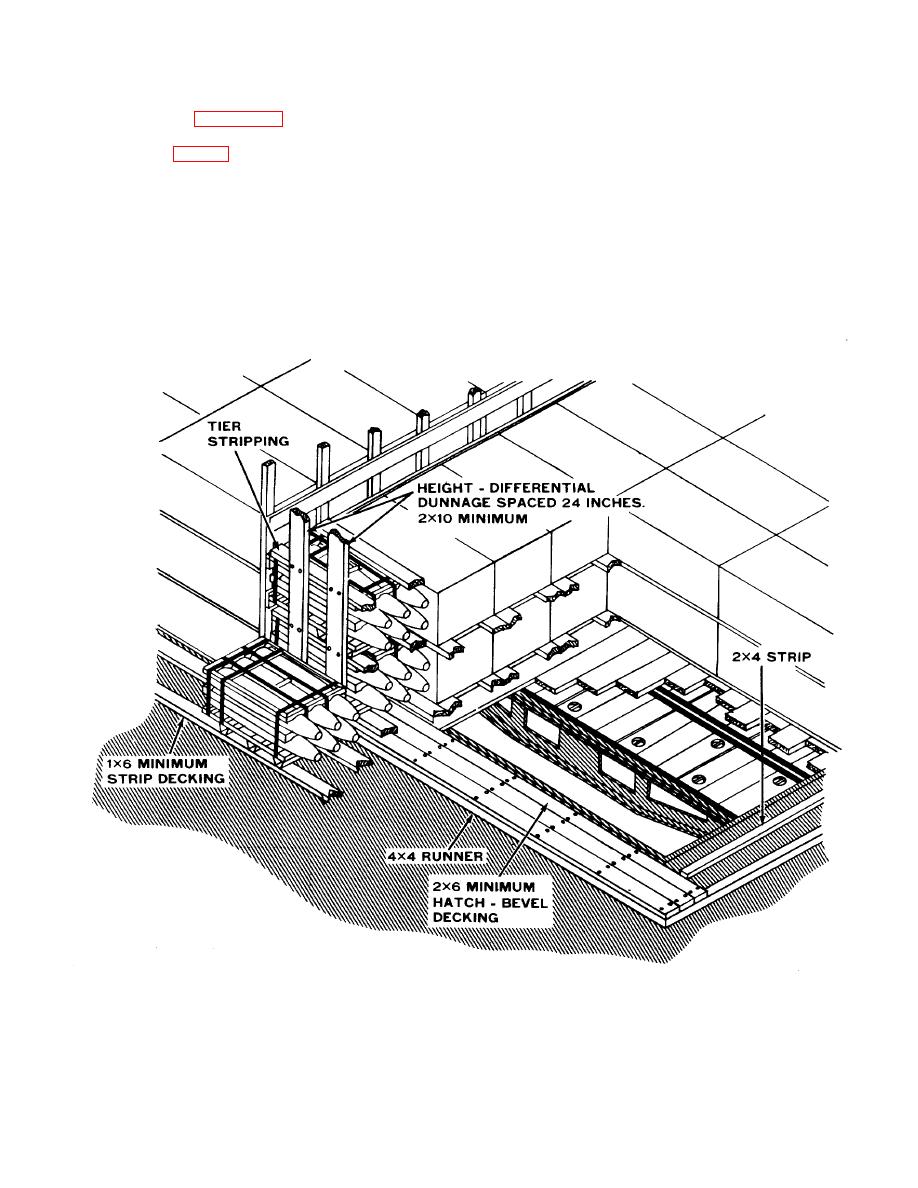
TM 55-607/NAVSEA OP 3221 Rev 2
(6) Height differential dunnaging. An area where unit loads of 500-pound bombs are often stowed is in the
square of the hatch. Figure 9-55 shows the stowing and dunnaging of the unit loads tween decks in the square of the
hatch. In this case the hatch edges are beveled, and 2by 4-inch strips are placed around the perimeter of the hatch on
top of the bevel (fig 7-6). The decking laid across the strips and the hatch boards provides a level stow area in the
square of the hatch, but it is evident that the decking in the square of the hatch is somewhat higher than that in the
remainder of the hold. Therefore, a height differential exists between loads stowed in the square of the hatch and those
stowed in the surrounding area. Two-way bomb loads, which are shown in the illustration, and several other types of
loads have exposed unsupported strapping on the sides; therefore, if adjacent loads or tiers are uneven in height, the top
edges of the lower loads will damage the strapping of the upper load during stowing or shipment unless preventive
measures are taken. The dunnage required to protect strapping on the sides of adjacent two-way bomb loads that are
uneven in height is constructed of 2by 10-inch minimum lumber spaced on 24-inch centers and nailed to the tier
stripping.
Figure 9-55. Height differential dunnaging for 500-pound-bomb unit loads in square of the hatch.
9 68


